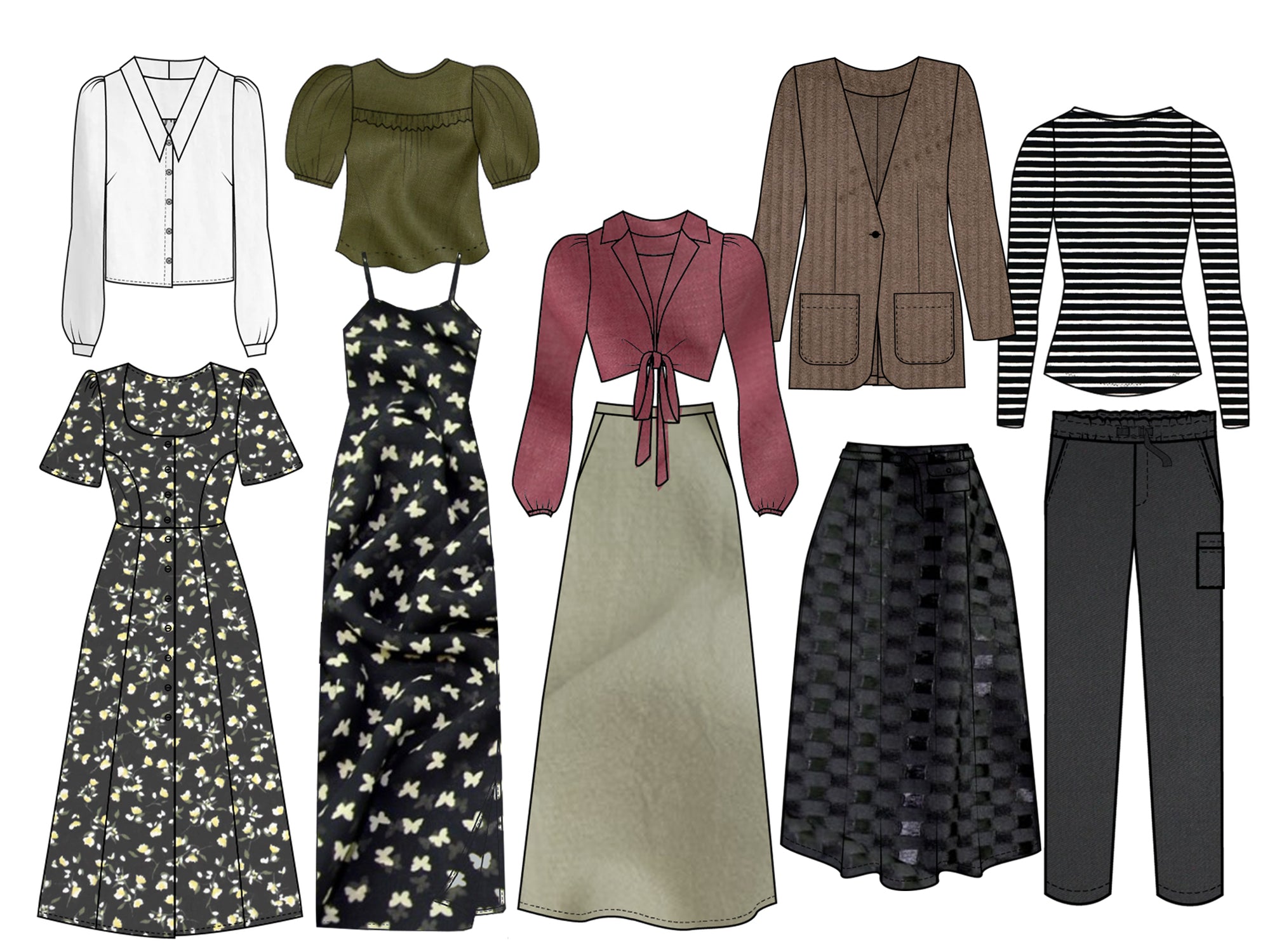Sewing a coat is such a rewarding project and putting it on knowing every stitch is your own feels amazing. With the right sewing tips and a bit of coating knowledge, you can go into your sewing with confidence. In this post, we wanted to share our top sewing tips for working with coating fabrics!
1. Choose the Right Fabric for the Project

Coating fabrics come in many varieties which can make sewing a coat somewhat confusing! You may come across fabrics like "wool blends", Quilted fabrics, bouclé, Corduroy, boiled wool, and more. Each has its own texture, structure, and drape, so it’s important to pick a fabric that suits your pattern.
Structured patterns like raincoats or duffle coats work best with firm fabrics like melton or heavy wool. Our patterns that would work well with heavier weight coating fabrics are the Beachcomber Jacket, and Ilford Jacket.
Relaxed, unlined styles pair nicely with boiled wool or softer blends like corduroy, fleece, and quilting. Patterns like our Heather Blazer, Eddy Cardigan Blazer, Pogonip Pullover, and also the Ilford Jacket!
Take a moment to give your fabric a little “drape test” to see how it behaves before cutting. If it has lots of movement and is slightly sheer then it may not be suitable for a coat.
2. Preparing your fabrics for sewing
Most coating fabrics wont require much prep but as will all fabrics it is always best to pre-wash them to allow for shrinkage and cleaning of any factory chemicals! With coatings some may not do well in a standard washer or dryer so it is always best to check with the fabric shop or place your purchased your fabric what the best wash settings or treatment setting would be.
- For wool coatings, steam pressing or hanging in a steamy bathroom can help relax the fibres. It is very likely unless it is a wool blend that you do not wash in a standard washer or dryer because wool can shrink and distort!
- If the fabric is washable, you can pre-wash it gently according to its care instructions. Usually a quick wash on a 30 cycle is enough to prep the fabric.
- Always test a small piece first to make sure it doesn’t distort or shrink. Making sure you order a tad more than needed is helpful for this especially if you have thrifted the fabric and therefore are guessing what the fabric care instructions would be.
3. Use Sharp Tools

Coating fabrics can be thick and textured, so blunt scissors or dull rotary blades will struggle. Use sharp dressmaking scissors or a fresh rotary blade to get clean, accurate cuts. Make sure if using a new rotary blade that there is no residue oil on it as that can transfer onto the fabric.
It may also be beneficial when cutting out your project to cut on a single layer rather than folding the fabric, as with thick fabrics getting an accurate cut through 2 ticker layers can be difficult.
A pair of small, sharp snips is also handy for trimming corners and notches.
4. Marking onto coating fabrics
Traditional fabric pens and chalk can be hard to see on thick coatings or anything with a texture like corduroy for example. Try tailor’s tacks (a method of sewing a singular strand of thread with a hand sewing needle), thread tracing, or a chalk wheel for clear, accurate markings that won’t get lost in the pile.
You can also try marking things on the wrong side of the pattern piece if it has a smoother surface.
5. Choose the Right Needle & Thread
Use a universal or sharp needle in size 90/14 or 100/16 for most coatings, and a strong polyester thread for durability.
If your fabric is especially thick, using a walking foot (other wise known as a quilting foot) helps thick layers move evenly under the machine, and means you can sew through multiple layers as once without any dragging or pulling on the fabrics.
6. Grading Seams, clipping corners, and pressing
Coating fabrics can bulk up quickly at seams, especially at collars, hems, and facings. Grading (trimming seam allowances to different widths) and clipping corners will help reduce bulk and give your coat a smooth, crisp finish. A good steam press after each step works wonders too but just check your fabric is okay with moisture or steam, wool for example doesn't react well to steam to you can also use a tailor clapper to press the seams.
Also using a pressing cloth over the fabric can protect it from burns or flattening any pile or texture.
8. Seam finishes
Coating fabrics can also be tricker to seam finish, unlike other garment sewing you can glide through a serger or overlocker without a second throught. As with most of the other steps we have covers it helps to tezt your coating fabric first in your serger or overlocker! Make sure your machine is happy sewing it an if not there are a couple of other methods you can try instead.

- Hongkong bound seam for coats without lining. This is the process of binding the seam allowance on either side and pressing open. This looks lovely if the coat isn't lined as it creates a lovely clean finish inside. You can have fun choosing a binding to either contrast or compliment depending on your style.
- Using pinking shears to trip seam allowance if you don't have an overlocker, this prevents fraying and keeps the seams looking neat an tidy.
- Grade seam allowances and do a front felled seam. This process looks great on denim and corduroy and creates a lovely top sticking detail around your seams and encloses them so they look neater.

Click here to watch our YouTube video about seam finishes!
9. Other tips to consider:

If your pattern has a placket sleeve consider omitting this if there is the option to or using a thinner fabric to do the placket. I have been caught out with this before when making the Ilford Jacket in a sherpa teddy style fabric and the placket was a nightmare to sew!

button choice: if your pattern has buttons, button-holes can also be difficult on thicker fabrics. You can opt for poppers, snaps, or clasps instead (like a duffle coat sometimes has) as a bulkier coating fabric friendly method!
Look at either sew on claps, or anorak snaps for a nice easy options without having to sew button holes!
10. Take Your Time
Sewing with coating fabrics often involves working with heavier materials, careful pressing, and more structured techniques. Don’t rush and enjoy the process and watch your coat take shape step by step!
Final Thoughts
Working with coating fabrics might feel a little different from sewing lighter garments, but with these tips you’ll be well on your way to creating a coat you can be super proud of! Practise makes progress, so keep at it and don't be worried if some seams are a little wobbly, it all adds to the charm of a handmade garment!








Leave a comment
This site is protected by hCaptcha and the hCaptcha Privacy Policy and Terms of Service apply.